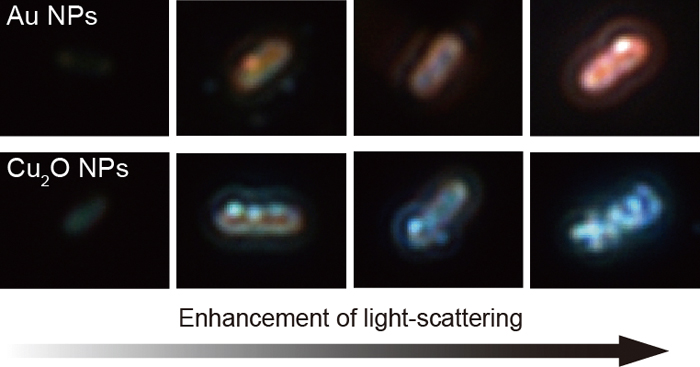Abstract
Metal nanoparticles express unique light-scattering characteristics based on the localized surface plasmon resonance, which depends on the metal species, particle size, and aggregation state of the nanoparticles. Therefore, we focused on the light-scattering characteristics of metal nanoparticles, such as silver, gold, and copper oxide, adsorbed on a bacterium. Monodisperse silver nanoparticles expressed the strongest scattered light among them, and showed various colors of scattered light. Although a monodisperse gold nanoparticle produced monochromatic light (green color), the color of the scattered light strongly depended on the aggregation state of the nanoparticles on a bacterium. On the other hand, copper oxide nanoparticles expressed monochromatic light (blue color), regardless of their aggregation states on a bacterium. We examined details concerning the light-scattering characteristics of metal nanoparticles, and discussed the possibility of their applications to bacterial cell imaging.
